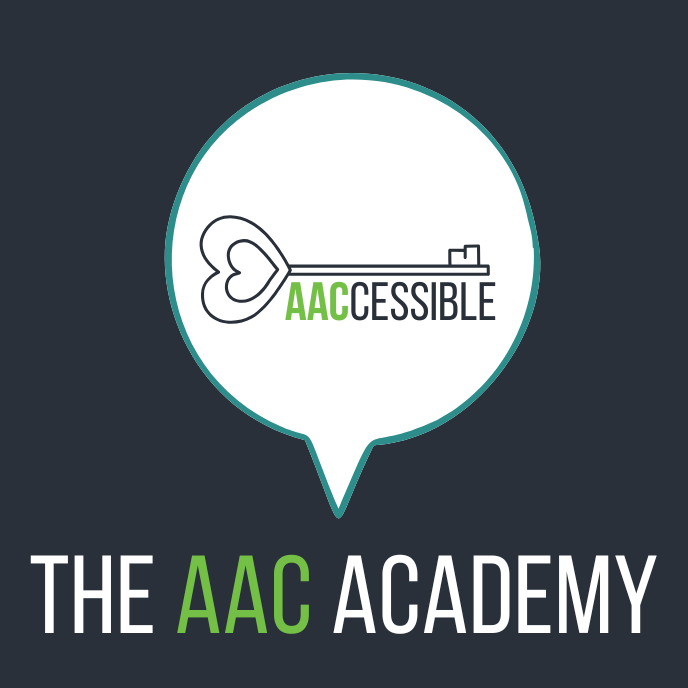live webinar series
AAC Feature Matching
Booster Series
Choosing the right augmentative and alternative communication (AAC) device can feel overwhelming—but it doesn’t have to be. This 3-part booster series builds on our AAC Assessment Compass Series to help you confidently navigate Lo-Tech, Mid-Tech, and Hi-Tech AAC options.
Through clear demonstrations and real-world examples, you’ll learn how to analyze system features—input, processing, output, and access methods—to make informed, individualized recommendations. Participants will also receive feature-match matrices and practical tools to use in their own evaluations.
Whether you’re new to AAC or ready to deepen your expertise, this series will expand your toolkit, sharpen your decision-making, and empower you to match the right technology to each communicator’s unique needs.
Write your awesome label here.
WHAT'S INCLUDED
-
3 Modules
-
Live Sessions + 12 months of access to recordings
-
CMH, Certificate Provided
-
Multimedia, hands-on learning experience
-
Online classroom community
-
Loads of resources!
From paper to power.
Move beyond your comfort zone and build confidence matching Lo-, Mid-, and Hi-Tech tools to each communicator’s strengths.
Stop guessing, start matching.
Gain hands-on tools and ready-to-use matrices to make informed AAC recommendations—from picture boards to apps to dedicated devices.
live session info
Join This Series Live!
Learning Objectives
Upon completion of each part of this series, learners will attain the following objectives and use a combination of assessment methods to determine growth across objectives.
Session 1: - AAC Feature Matching: Overview, LoTech/Mid Tech AAC Devices (dedicated systems)
- Describe the types of Lo-Tech AAC systems commercially available.
- List and describe Lo-Tech AAC systems based upon 4 features;
- Create a feature match matrix for Lo-TechAAC systems for an individual.
- Describe the types of input options available in AAC Apps.
- Describe and give examples of 7 different processing options in AAC Apps.
- Create a feature match matrix for AAC Apps systems for an individual.
Continuing Education Credit
This series offers eligible students a total of
4.5 certification maintenance hours (CMH)
4.5 certification maintenance hours (CMH)
Learn more about CMH/PDH (versus CEU's or continuing education units) on your course syllabus and on our CEU Page. All learners are encouraged to confirm that this course meets the requirements of their licensing board before purchasing.
Write your awesome label here.
Meet the instructor
Kelly Fonner
Kelly Fonner, MS, is a self-employed consultant and trainer in assistive and educational technology. She has a BS in Special Education from Millersville University and an MS in Educational Technology with an emphasis in Rehabilitation/Special Education Technology from The Johns Hopkins University. Her continuing education and research have been in Adult Education and Special Education Technology at the University of Wisconsin – Milwaukee. She holds an Assistive Technology Applications Certificate of Learning from California State University, Northridge.
Kelly has been a teacher, para-educator, instructional media specialist, assistive technology specialist, and education consultant, and is currently a self-employed consultant in assistive technology and is an online teacher and IEP member of students with complex communication and learning needs. She has worked for a statewide AT project on several federal AT-related grants and has been an instructor in university courses on AT. Kelly is also a family member of individuals with physical challenges and with Asperger's. She is a leadership member of QIAT (Quality Indicators in Assistive Technology; pronounced “QUIET”) & the WI AAC Network. She is a co-author of two QIAT books.
For over 40 years, Kelly has presented at schools, conferences, & to families across the US, and internationally in Australia, Brazil, Canada, and South Africa. She speaks on a wide range of topics, including assisted writing, augmentative communication, computer access, electronic literacy, assistive technology assessment, and implementation strategies. Each year, she works with approximately 20 school-based teams supporting students and the implementation of AAC & electronic literacy implementation in the classroom.
Patrick Jones - Course author
